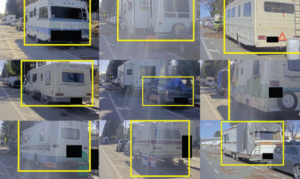In recent months, San Jose, a city in the heart of Silicon Valley, has been training artificial intelligence to identify tents and cars with people living inside. According to experts, this is the first experiment of its kind in the United States.
Last July, San Jose put out an open call for tech companies to install cameras on a municipal vehicle that began periodically driving through the city in December, gathering footage of streets and public spaces. The images are fed into a computer and used to train the company’s algorithms to identify unwanted objects.
Some of the capabilities sought by the pilot project — such as detecting potholes and cars parked in bus lanes — already exist in other cities. But the automated tracking of homelessness is the first of its kind in the country. Locals who were previously unaware of the experiment worry that the technology is being used to punish and push out San Jose’s homeless.
City officials drive a camera-equipped vehicle through 10 neighborhoods every few weeks, said Khaled Tawfik, director of San Jose’s information technology department. The city is sending training materials to participating companies, which include Ash Sensors, Sensen.AI, Xloop Digital, Blue Dome Technologies and CityRover.
Some of the areas included in the pilot project, such as Santa Teresa Boulevard, are places where homeless people congregate. For example, the light rail station on Santa Teresa Boulevard is home to the city’s only secure parking lot for mobile homes, which are often used as homes.
There is no set end date for the project, Tawfik said, and as the models are refined, he believes the targets could expand to include lost cats and dogs, parking violations and overgrown trees.
“If the city were to implement this technology permanently, cameras would be coming to all of the city’s motor vehicles that regularly travel within the city limits,” one city employee noted.
City documents state that in addition to accuracy, one of the key metrics for AI systems is their ability to preserve the privacy of people caught on camera — by blurring faces and license plates, for example.
The pilot project’s data use policy states that footage cannot be actively monitored for law enforcement purposes, but police can request access to previously recorded footage.
Source: The Guardian

